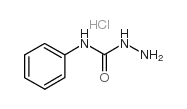| 结构式 | 名称/CAS号 | 全部文献 |
|---|---|---|
 |
4-苯基氨基脲盐酸盐
CAS:5441-14-5 |
| 结构式 | 名称/CAS号 | 全部文献 |
|---|---|---|
 |
4-苯基氨基脲盐酸盐
CAS:5441-14-5 |